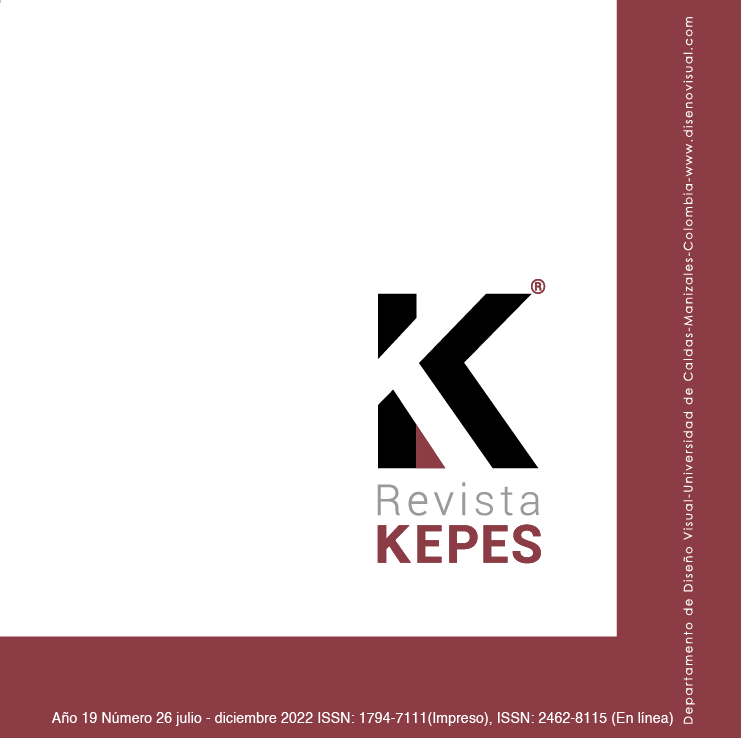Authors
Abstract
Artifacts exist to the extent that they are incorporated into everyday life, into the daily dynamics that tame us and in the practices that recognize us as human members of a community or culture. Now, what happens to artifacts if human practices change as well as everyday life, whether because of this change or forgetfulness, they are disregarded? This also requires asking about the meanings that are built after the interaction between subjects and artifacts, about the features that characterize the latter based on the identities of a territory and about the logics where it is possible to see what is current or obsolete in the ways of doing towards the road to territorialize the vital. This article is a result of a research that deals with the forms of incorporation, practice and oblivion of the artifacts of daily life, in particular the corn grinding machine in the territorial context of Riosucio, Colombia through a theoretical-hermeneutic approach that uses the hybridization between the purposes of emerging design and ethnographic design in order to question the design dimension of the tradition and obsolescence of a territorial artifact in a territorial key.
Keywords
References
Connelly, F. M. y Clandinin, D. J. (1995). Relatos de experiencia e investigación narrativa. En J. Larrosa, Déjame que te cuente. Alertes.
Creswell, J. (2005). Educational research: planning, conducting and evaluating quantitative and qualitative research (2ª. Ed.). Pearson Education Inc.
Debray, R. (1994). Vida y muerte de la imagen. Historia de la mirada en Occidente. Paidós.
De Certeau, M. (1999). La invención de lo cotidiano. Artes de hacer (Vol. 1). Universidad Iberoamericana.
Dussel, E. (1984). Filosofía de la producción. Editorial Nueva América.
Escobar, A. (2016). Autonomía y Diseño. La realización de lo comunal. Universidad del Cauca.
Flores, M. (2007). La identidad cultural del territorio como base de una estrategia de desarrollo sostenible. Revista Ópera, 7, 35-54.
García, M. P. (2012). El patrimonio cultural. Conceptos básicos. Prensas Universitarias de Zaragoza.
Glaser, B. G. (1992). Basics of grounded theory analysis: Emergence vs. Forcing. The Sociology Press.
Grajales, D. (2015, 18 de abril). Colombia sabe a maíz. elmundo.com. https://bit.ly/3Qoxo1k
Grande, D. y Orozco, B. (2013). Producción y procesamiento del maíz en Colombia. Revista Guillermo de Ockham, 11(1), 97-110.
Hernández, R., Fernández, C. y Baptista, M. P. (2014). Metodología de la investigación. McGrawHill Education.
Kiessling, K. (2004). Ricoeur, Paul, la memoria, la historia y el olvido. Fondo de Cultura Económica.
Krippendorff, K. (2016, 5 de abril). Rediseñar el diseño. Una invitación a un futuro responsable. Infolio. https://bit.ly/3PkMqE7
Leroi-Gourhan, A. (1971). El gesto y la palabra. Universidad Central de Venezuela.
Lindón, A. (2000) La vida cotidiana y su espacio-temporalidad. Anthropos Editorial.
Mandoki, K. (2001). Análisis paralelo en la poética y la prosaica. Un modelo de estética aplicada. Aisthesis, 34, 15-32.
Mansilla. (2014, 19 de junio). Legado Maya “Los hijos del maíz”. https://bit.ly/3SP2VLo
Martín, F. (2002). Contribuciones para una antropología del diseño. Editorial Gedisa.
Mesa, C. (2010). Superficies de contacto. Adentro en el espacio. Mesa Editores.
Montañez, G. y Delgado, O. (1998). Espacio, territorio y región: conceptos básicos para un proyecto nacional. Cuadernos de Geografía, 7, 120-133.
Morin, V. (1969). El objeto biográfico. En S. Waldman (Ed.), Los objetos (pp. 187-199). Editorial Tiempo Contemporáneo.
Ossa, J. (2009). Molido a golpes. Iconofacto. Revista de la Escuela de Arquitectura y Diseño, 5(6), 51-68.
Rodríguez, D. E. (2006). ¿Cómo mueren los objetos? Ideas sobre la estética en el objeto de uso. Universidad Nacional de Colombia.
Romero-Ramírez, M. A. & Reyburn, D. (2021). Towards an expansive object and a restrictive experience in Everyday Aesthetics: A Chestertonian metaxological approach. Revista Kepes, 18(24), 197-231.
Strauss, A. & Corbin, J. (1990). Basics of qualitative research: Grounded theory procedures and thecniques. Sage.
Tizon, P. (1996). Qu’ est ce que le territoire? En Guy Di Méo (Dir.), Les territoires du quotidien (pp. 17-34). L’Harmattan: Paris.
Unesco. (2011). Paisaje Cultural Cafetero. Un paisaje cultural productivo en permanente desarrollo. Taller Editorial Escuela Taller de Bogotá.
Yanagi, S. (2021). La belleza del objeto cotidiano. Editorial GG.
Yin, R. (2003). Case Study Research: Design and Methods (3rd ed.). Sage.

 PDF (Español)
PDF (Español)
 FLIP
FLIP






















